How to Deep Clean and Sanitize House After Illness
Most people think that if a surface looks clean, it’s safe. However, cleaning and sanitizing surfaces are in fact two different things. Cleaning removes dirt and a large number of bacteria. However, cleaning may also spread other bacteria to larger surfaces. Sanitizing, on the other hand, kills bacteria.
Generally, you should clean surfaces thoroughly before sanitizing your house otherwise dirt or grease buildup won’t allow sanitizer to get through thoroughly.
If this sounds like too much work for you, you can combine 2 steps into 1 and save time by using a steam cleaner. Steam can dissolve grease just by itself! Karcher’s steam vacuum cleaner allows you to vacuum cleaning dirt and sanitize bacteria-contaminated surfaces in only one single pass!
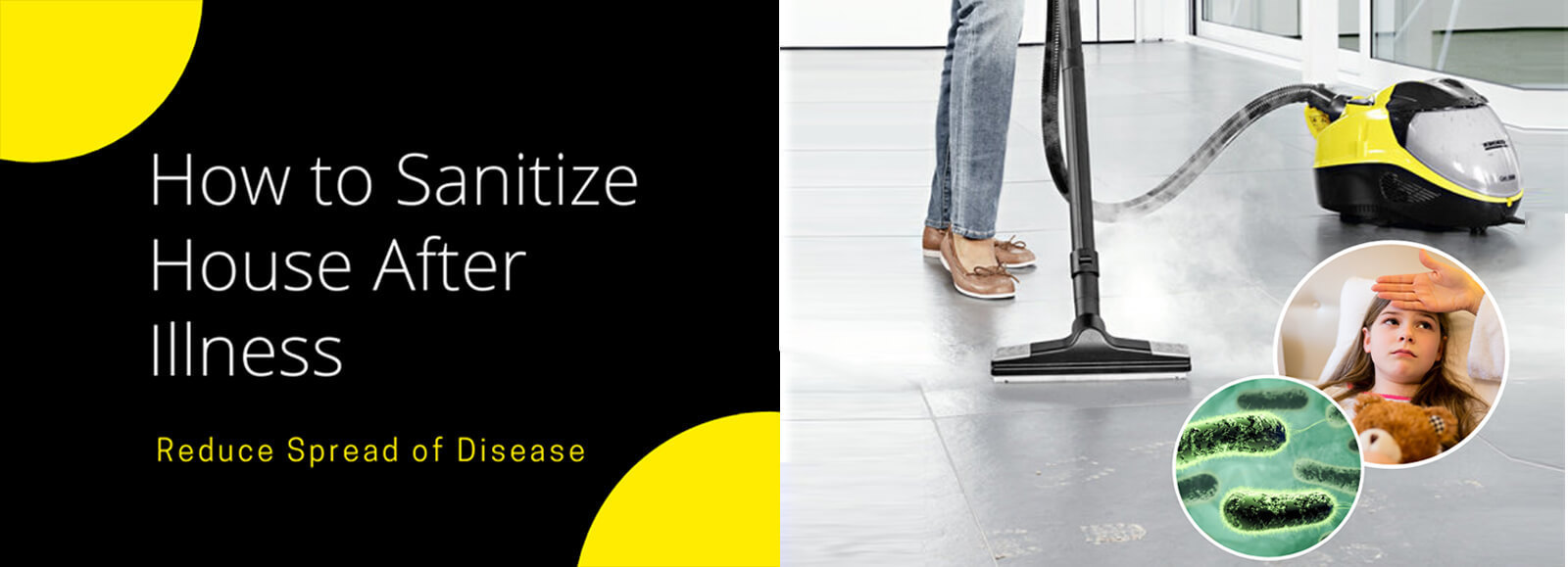
Cleaning and Sanitizing Your House with Steam
Hot steam kills bacteria, sanitizes and breaks down grease and oil at one go. Hot steam also penetrates fine cracks between dirt and surfaces, leaving no surfaces untouched.
Our steam cleaner is definitely one of the best ways to deep clean and sanitize the house efficiently for busy working professionals.
While most people are queuing up for masks and fighting over the last bottle of hand sanitizer during this coronavirus (COVID-19) outbreak, we tend to overlook the need to sanitize our house and office surfaces as well.
With this in mind, do you have all the cleaning tools ready to deep clean and sanitize your home or office space thoroughly? Before we get into the nitty-gritty, let’s find out how coronavirus (COVID-19) are transmitted so that we can take full precaution to minimize the risk of getting infected.
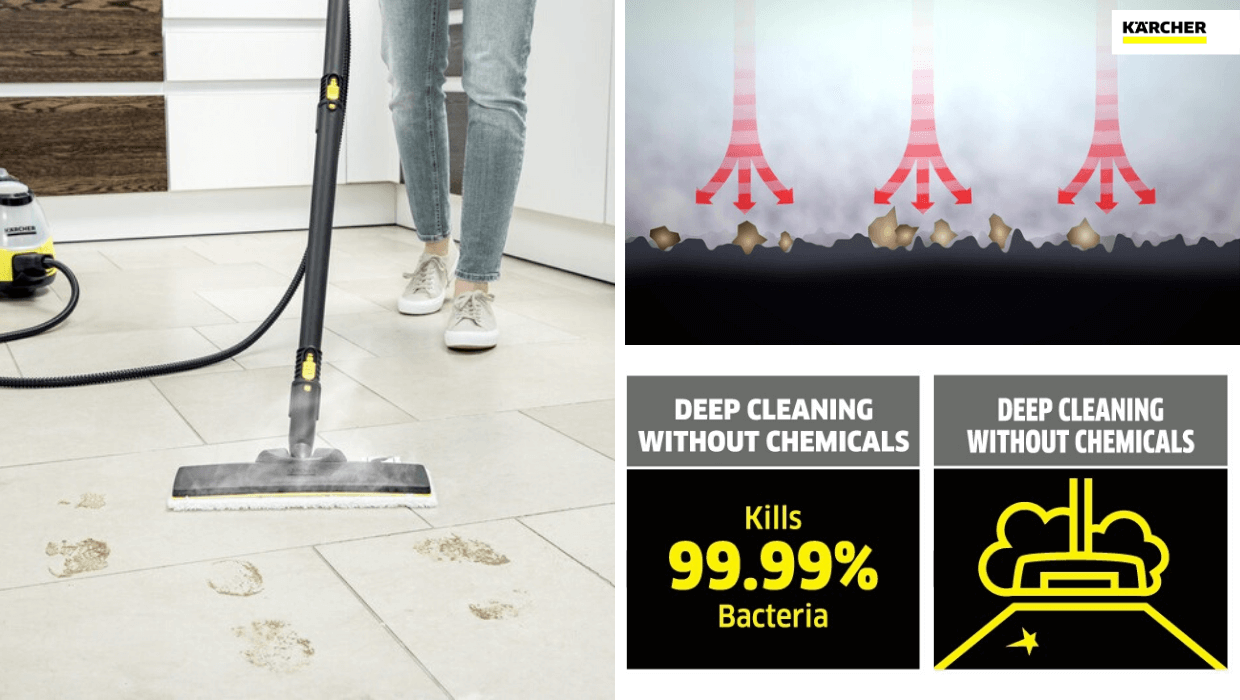
How is Coronavirus (COVID-19) Infections Transmitted?
Coronavirus (COVID-19) infection cases make it to headlines almost every day now in almost every country. It is vital to understand how this disease is transmitted in order to take precautions against it.
There are different ways that coronavirus (COVID-19) infections can be transmitted.
- It could be transmitted through the air by means of coughing and sneezing.
- It could also be spread via close personal contact.
- Any kind of human body contact that involves skin to skin contact (eg: By touching or shaking hands)
- Lastly, coronavirus (COVID-19) can also be transmitted by touching the mouth, nose or eyes right after touching contaminated surfaces.
How to Protect Yourself from Infectious Diseases
Currently, there is no vaccine available in the market that is specifically invented to help to prevent coronavirus (COVID-19) infection.
However, like the old saying “prevention is better than cure” indicates, the best way to prevent coronavirus (COVID-19) infection is to avoid being exposed to this kind of virus from the start.
The Centers for Disease Control and Prevention (CDC) has recommended a few useful preventive measures to help to avoid the transmission of respiratory type viruses (coronavirus is a kind of common virus that can cause upper-respiratory illnesses).
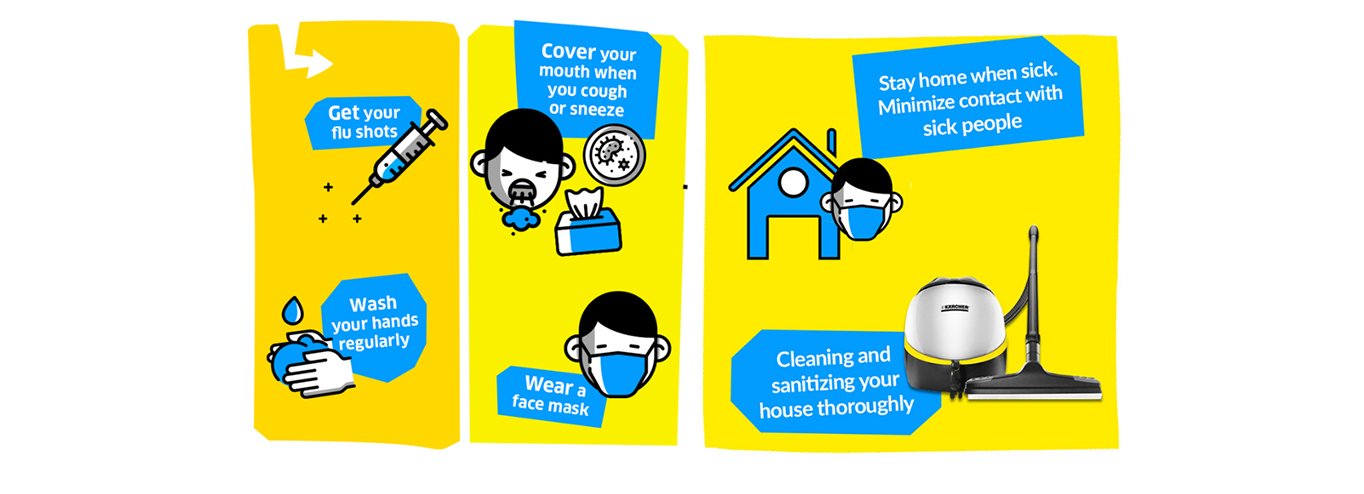
1. Wash Your Hands Often
You should always remember to wash your hands thoroughly with soap and water for at least 20 seconds, especially after using the bathroom, before eating, after blowing your nose, coughing or sneezing.
If you find yourself in a situation where soap and water are not at arm’s length, a bottle of alcohol-based hand sanitizer will then come in handy. Please pay attention to the alcohol content of the hand sanitizer that you choose to use. The most ideal hand sanitizer should contain at least 60% alcohol.
However, you should always wash hands the most traditional way- with soap and water if there is visible dirt on your hands. Furthermore, you should always avoid touching your eyes, nose and mouth with unwashed/unsanitized hands.
2. Cover Your Coughs and Sneezes
When coughing or sneezing, please cover your nose and mouth with a tissue and then discard the tissue in the trash.
3. Minimize Contact With Sick People. Stay Home When Sick.
To be safe, you should avoid being in contact with people who are sick and also stay home when you are sick to prevent spreading the disease around.
And, to protect your family from getting sick, it is also highly recommended to practice good hygiene practice at home by taking the time to thoroughly clean and sanitize common surfaces.
4. Cleaning and Sanitizing Your House Thoroughly
You should make sure to clean and sanitize your house, especially frequently touched objects and surfaces with a regular household cleaning spray, wipe or steam cleaner.
How to Properly Sanitize Your House and Belongings After Illness?
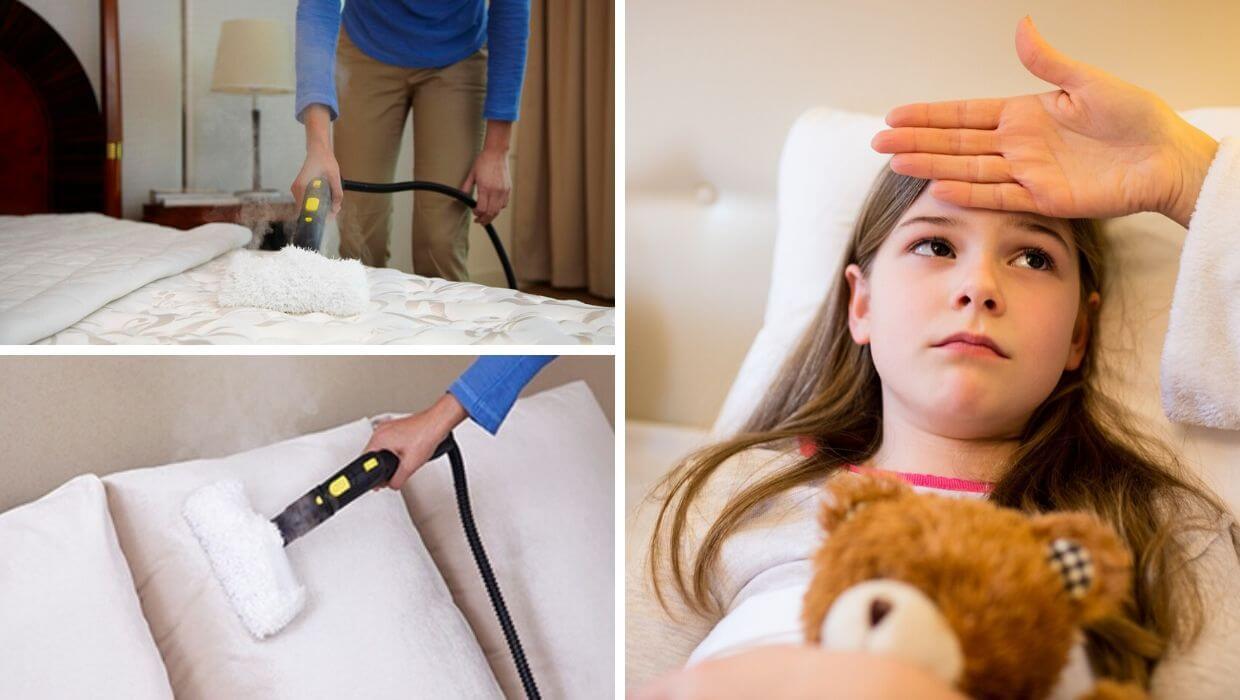
1. Digital Gadgets (Handphone, Laptops, Desktops)
Nobody would argue that a mobile phone is one of the most touched and least cleaned items everybody owns. Thus, it must be sanitized regularly.
You should also wipe sanitize computer keyboards or screens with an alcohol wipe or a paper towel that is sprayed with a sanitizer.
2. Deep Clean Bedroom
You should also wash your bed sheets, blankets and towels at high temperature to kill all the germs.
To kill common household bacteria on a mattress, sofa or any other upholstery surfaces, you do not necessarily need to shift all the heavy furniture outside to eliminate bacteria under UV rays. You can also rely on a steam cleaner to deep clean couch cushions, sofa and upholstery surfaces.
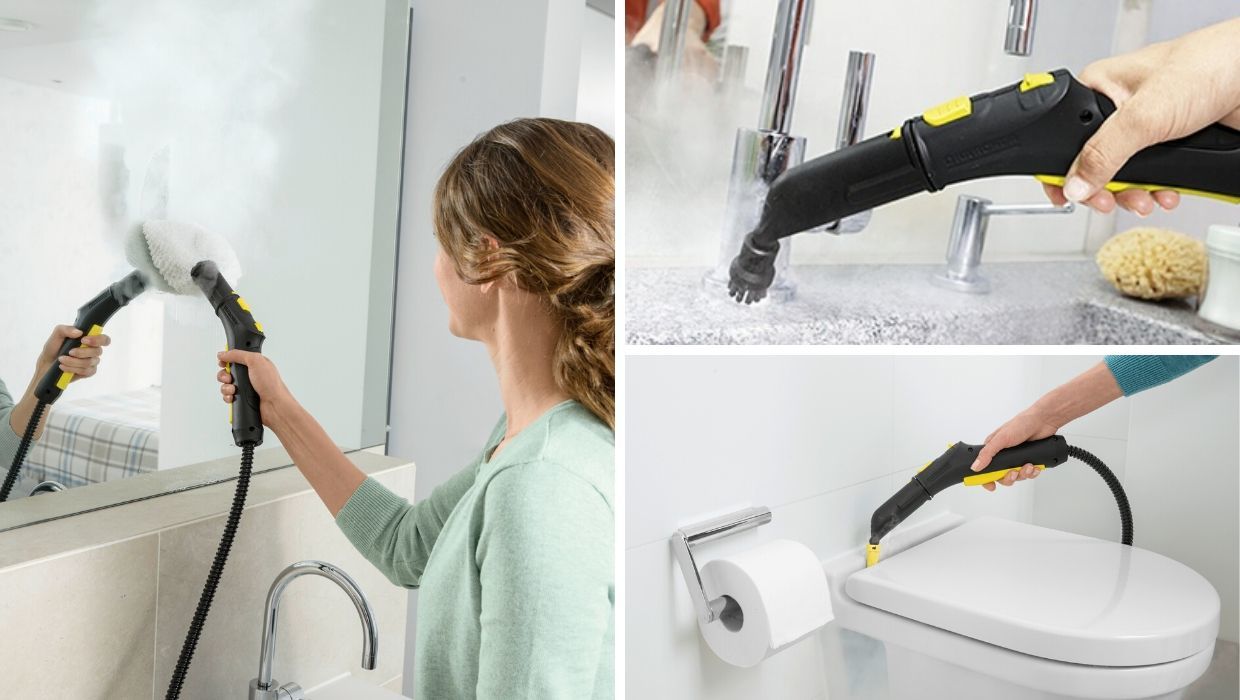
3. Washroom Deep Cleaning
You should provide a separate hand towel for the sick person in the household to prevent the disease from spreading through a shared towel in the house.
The other thing that you should take note of is the toothbrush holder as it is often placed close to the toilet. It might be contaminated by air/water particles coming from flushing the toilet. People are prone to neglect this area when cleaning the toilet.
Hence, it is important to remember to also wash and sanitize your toiletries holder regularly.
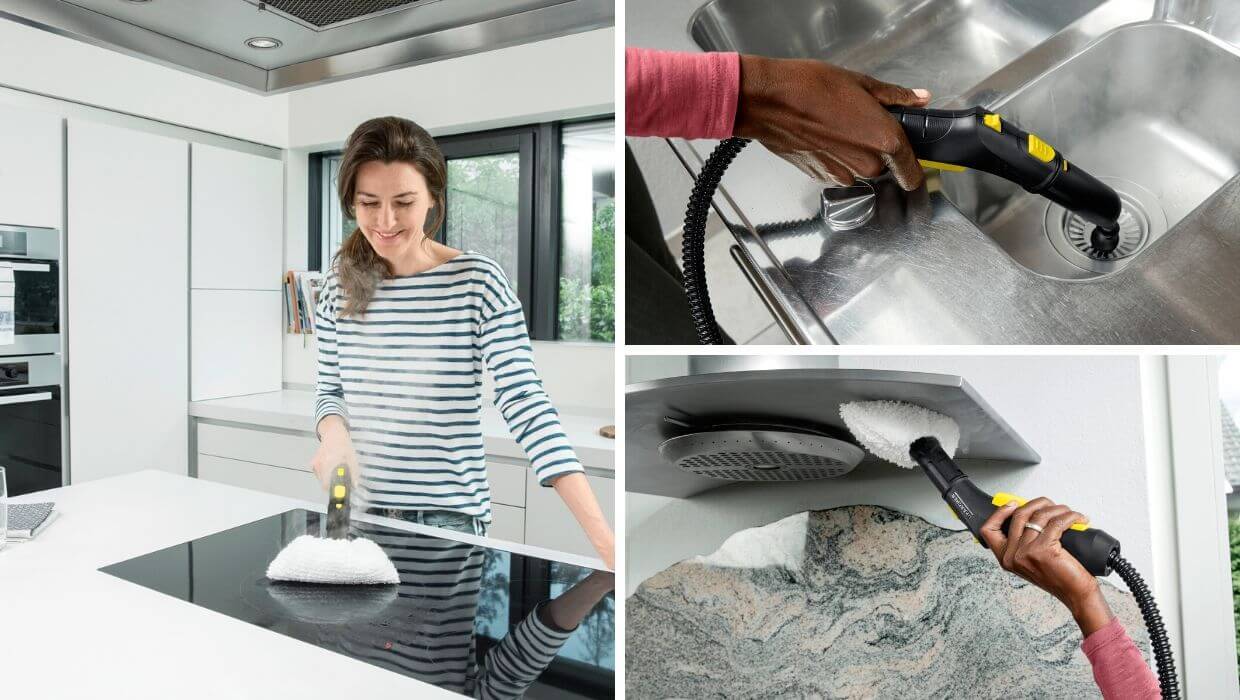
4. Deep Cleaning the Kitchen
You should also remember to sanitize your kitchen as one study found that the kitchen sink actually contains more bacteria than the toilet or trash can.
5. Deep Clean and Sanitize Commonly Used Surfaces
Table surfaces in common rooms such as coffee tables, kitchen tables, night tables and children play area tables need to be sanitized from time to time as they are in contact with human bodies very often and hence tend to host bacteria easily.
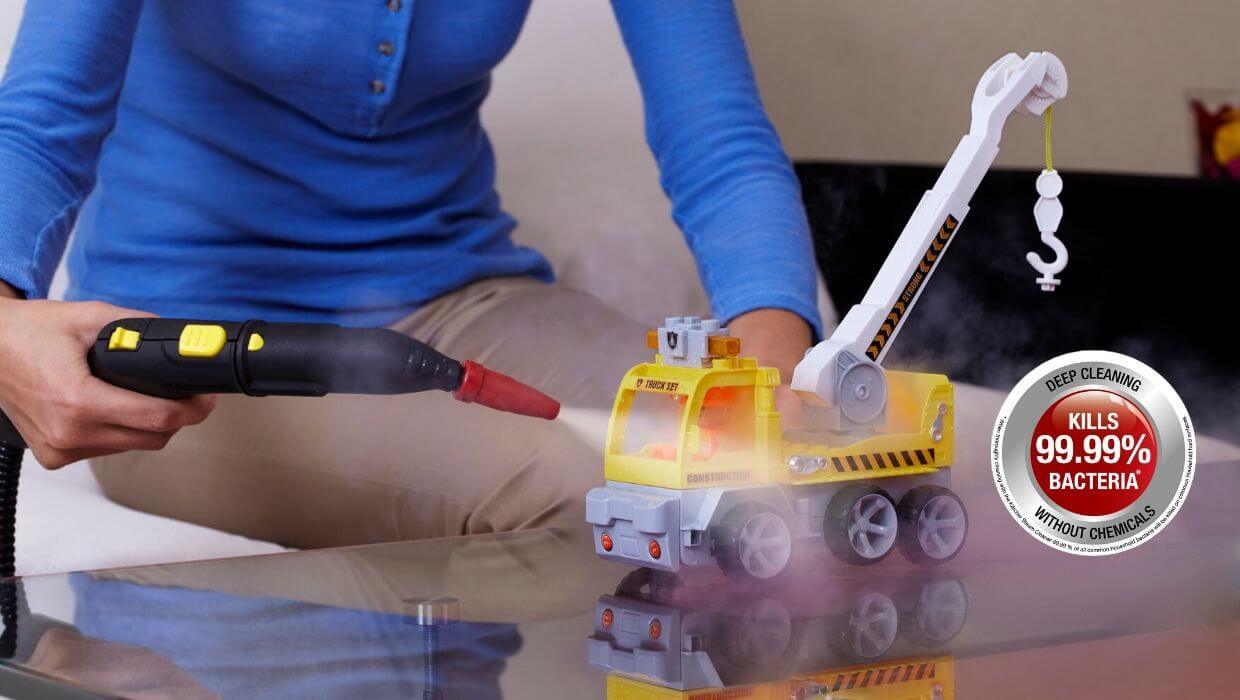
6. Children Toys
Stuffed animals are among other household items that you should sanitize from time to time. Simply clean them in the laundry machine before exposing them to direct sunlight (UV rays) for a few days to kill all the bacteria inside.
Alternatively, you can protect your child by eliminating 99.99%* of the bacteria naturally without using any chemicals through steam cleaning.
Best Way to Sanitize Your House Naturally
Nothing beats natural, chemical-free home remedy when it comes to the best way to sanitize the house.
1. Steam Cleaning and Hot Water
Steam and boiling hot water are effective in killing common household bacteria. It is one of the most natural ways to sanitize your household.
Your dishwasher is your best friend in the kitchen that you could count on to sanitize bacteria on all your dishes and cutleries.
You can consider investing in a steam vacuum cleaner to sanitize the house as it uses steam to kill 99.99%* of common household bacteria.
2. Vinegar
Vinegar is the magical all-natural sanitizer that you will ever need. Vinegar contains acetic acid, and its antimicrobial properties make it efficient in cleaning mould despite its rather cringe-worthy, strong odour.
3. Tea Tree Oil
Another all-natural sanitizer, the tea tree oil is extracted from the leaves of the Australian Melaleuca tree. It is a natural antibacterial, antifungal and antiseptic essential oil that is commonly used as one of the ingredients for cosmetics and skincare.
Other than that, it can be easily transformed into a powerful household cleaner when it is mixed with water. Due to its concentrated properties, you just need to put a few drops of the oil into a bucket of water to make it an effective cleaning agent.
However, some people may be allergic to tea tree oil, please do take extra precaution to test it out before cleaning with tea tree oil, especially if you have little ones at home.
On a side note, we only need tap water when using steam cleaner. It is not advisable to add tea tree oil into the steam cleaning water tank.
Conclusion
One of the best ways to sanitize a house is deep cleaning your household surfaces with our steam cleaners and steam vacuum cleaners!
Thorough cleaning with Karcher steam cleaner removes 99.99%* of all common household bacteria from household hard surfaces without leaving any chemical residue behind; it can wipe your worries clean, literally!
Karcher empowers you to have better hygiene and healthier living. It’s a small investment that guarantees you peace of mind in return.
* Thorough cleaning with the Kärcher steam cleaner removes 99.99% of all common household bacteria from common household hard surfaces.

